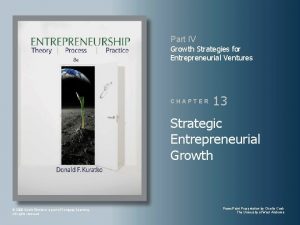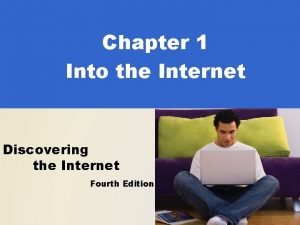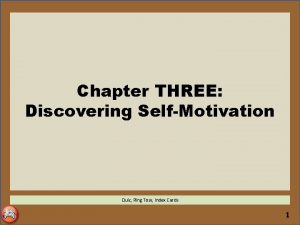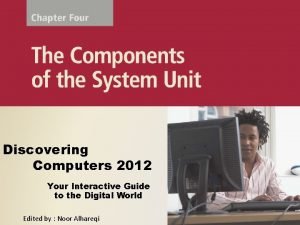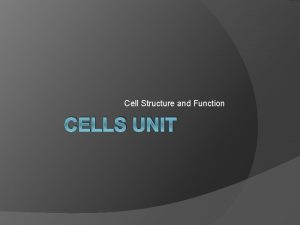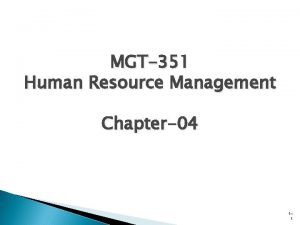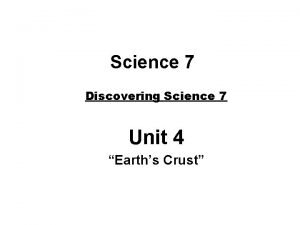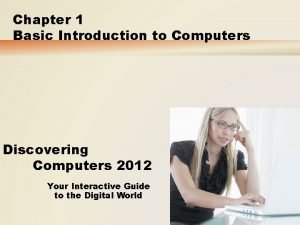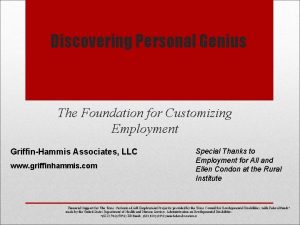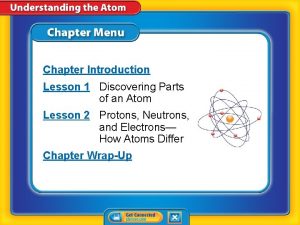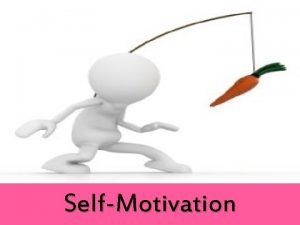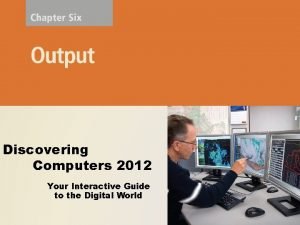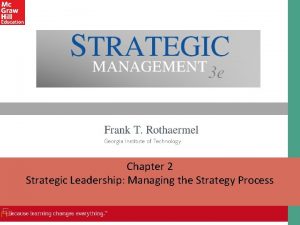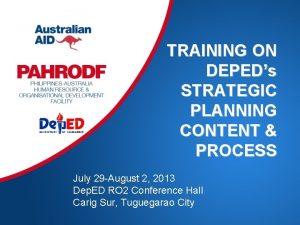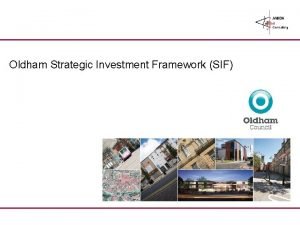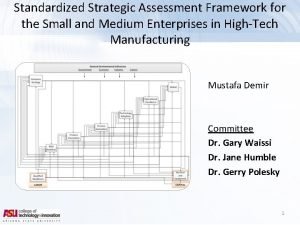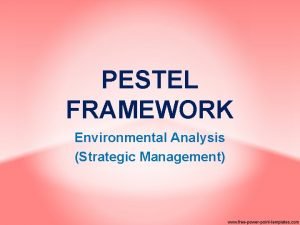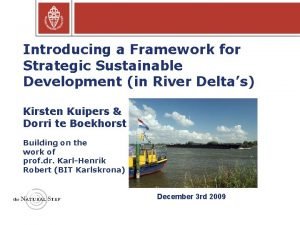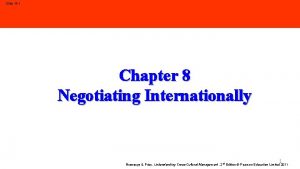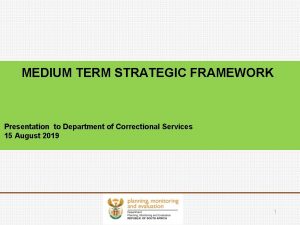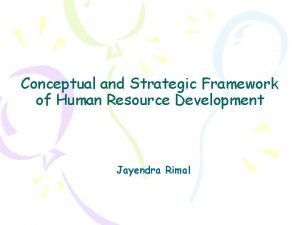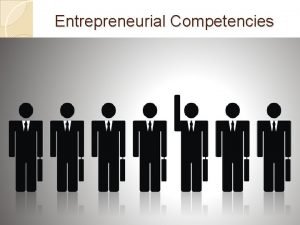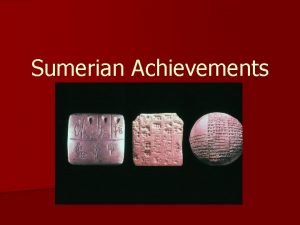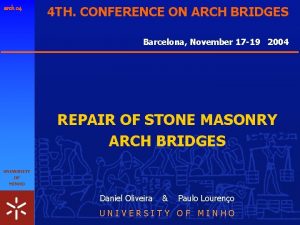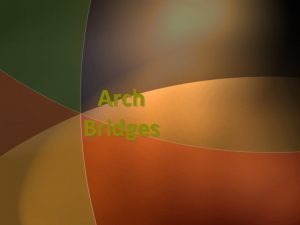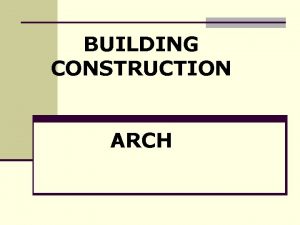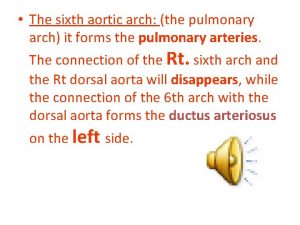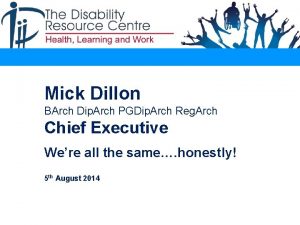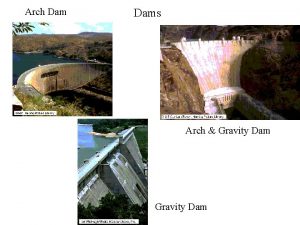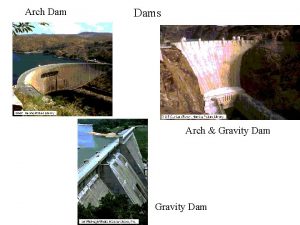The Entrepreneurial Arch A Strategic Framework for Discovering
















































- Slides: 48

The Entrepreneurial Arch A Strategic Framework for Discovering, Developing and Renewing Firms Timothy L. Faley Ph. D. , MBA Kiril Sokoloff Distinguished Professor of Entrepreneurship Special Assistant to the President for Entrepreneurial Initiatives University of the Virgin Islands

Cambridge Press, 2014 Available at: www. entrepreneurialarch. com

We need more entrepreneurs…. People that can: n Identify emerging opportunities (and threats) n Formulate innovative business solutions around those opportunities n Assess the feasibility of new businesses n Develop actionable plans from disparate and incomplete information n Identify, align, and acquire the necessary resources to power the plan forward n Drive accelerated growth Copyright © 2014 by Timothy L. Faley 3

But… n n How do you develop these entrepreneurs? Especially when you do not currently have a vibrant entrepreneurial ecosystem? It’s a confusing landscape out there… … that desperately needs some clarity! n Copyright © 2014 by Timothy L. Faley 4

Revealing the. . . Entrepreneurial Elephant en tio n Innovation Vent Corporate Growth Renewal Bu Tea ild m in Core Capabilities g ng Pit chi Business Plan Business Model p Copyright © 2014 by Timothy L. Faley Customer Discovery rtu ta S an Le Ideas l a t i p a C e r u Creativity I nv 5

Building a Business is a Process: : Stochastic, iterative one, but still a process Operationalize Business Resource / Due Diligence Manage Growth Capabilities Business Copyright © 2012 by Timothy L. Faley Copyright © 2014 by Timothy L. Faley 6

Building a Business is a Process: : Stochastic, iterative one, but still a process r ve o s si u B s ne sc i D Operationalize Business ? Bu sin es s. E xe cu tio n Resource / Due Diligence Manage Growth Capabilities • • Skills/Talents Assets (physical/Intellectual) Networks/Relationships Interests/Passions/Aspirations Copyright © 2014 by Timothy L. Faley Business Copyright © 2012 by Timothy L. Faley 7

Building a Business is a Process: : Stochastic, iterative one, but still a process Business Assessment Operationalize Business Resource / Due Diligence Is it worth doing? Manage Growth Business Copyright © 2012 by Timothy L. Faley Copyright © 2014 by Timothy L. Faley 8

Building a Business is a Process: : Stochastic, iterative one, but still a process Business Assessment Business Design Operationalize Business Resource / Due Diligence What is “it”? Manage Growth Business Copyright © 2012 by Timothy L. Faley Copyright © 2014 by Timothy L. Faley 9

Building a Business is a Process: : Stochastic, iterative one, but still a process Business Assessment Business Design Opportunity Identification Copyright © 2014 by Timothy L. Faley Operationalize Business Resource / Due Diligence What problem are you solving? Manage Growth Business Copyright © 2012 by Timothy L. Faley 10

Building a Business is a Process: : Stochastic, iterative one, but still a process Business Assessment Operationalize Business Design Opportunity Identification Capabilities • • Skills/Talents Assets (physical/Intellectual) Networks/Relationships Interests/Passions/Aspirations Copyright © 2014 by Timothy L. Faley Resource / Due Diligence The Entrepreneurial Arch Manage Growth Business Copyright © 2014 Timothy L. Faley Copyright © 2012 by Timothy L. Faley 11

Two halves: Discovery and Execution Business Assessment Operationalize Business Design Opportunity Identification Capabilities • • Skills/Talents Assets (physical/Intellectual) Networks/Relationships Interests/Passions/Aspirations Copyright © 2014 by Timothy L. Faley Resource / Due Diligence The Entrepreneurial Arch Manage Growth Business Copyright © 2012 by Timothy L. Faley 12

Capability Map: Foundation of Discovery Team Capability Map Copyright © 2014 by Timothy L. Faley Corporate Capability Map 13

First Stages are very iterative n It is a hypothesis-directed discovery/learning process n n n What you learn in a subsequent stage changes your position in the prior Move quickly – don’t fall in love with your first idea Requires constant “zooming-in and zooming-out” n Taking both a narrow, detailed view and broad, “big picture” perspective Business Assessment Operationalize Business Design Opportunity Identification Capabilities Copyright © 2014 by Timothy L. Faley Resource / Due Diligence The ENTREPRENEURIAL ARCH Manage Growth Business 14

Typical Business Deliver Product and/or Service My Company My Customer Capture Value From offering Copyright © 2014 by Timothy L. Faley 15

Zoom In slightly for a closer look es iti Activ Monetization Copyright © 2014 by Timothy L. Faley Customer is the “Owner” of the issue your offering solves 16

Generalizing: 4 Pillars for Every Business What can you do about it? (Activity) What problem are you trying to solve? (Motivation to change) Copyright © 2014 by Timothy L. Faley Can you make money doing this? (Monetization) Who has this issue? (Owner) 17

Zooming in on one of the Pillars Who has the issue? (Issue “Owner”) Copyright © 2014 by Timothy L. Faley 18

Zoom in on issue “Owner” pillar to four different levels Society Industry (ecosystem or network of businesses) Industry Segment Copyright © 2014 by Timothy L. Faley Customer 19

Every Business: 4 Components Zooming In/Out Each Business Component can be zoomed in to 4 different levels by increasingly narrowing the field of view to reveal the specific elements at that level Owner (who) • Society • Industry segment • Customer Copyright © 2014 by Timothy L. Faley Motive (why) • Macro Driver • General Problem • Specific Issue • Need/Desire Activity (what/how) • Opening • Capabilities • Approach • Offering/Action Monetization • Potential to create value • Create value • H. Value / Capture value • Revenue model • Margin Assessment • Investability Analysis 20

Moving Across the Arch’s Discovery Section… …Means Zooming In on the Components Business Assessment Business Design Opportunity Identification Zooming In/Out Capabilities Owner (who) Copyright © 2014 by Timothy L. Faley Motive (why) Activity (what/how) Monetization 21

Business Discovery n Opening n n Potential for you to create value n n Industry Analysis; Value System Assessment Potential to capture value n n Opening and alignment with your capabilities High-value problem (Problem worth solving) n n 7 Sources of Innovation Strategy, Industry Analysis, Porter’s 5 Forces, Position for Value Capture (PVC) Investable n Will it be worth more than it costs to build? Copyright © 2014 by Timothy L. Faley 22

Macro drivers that create openings: Drucker’s 7 Sources on Innovation Unexpected Occurrences 1. n Believed the drug would reduce blood pressure, and it grew hair! Incongruities 2. n “Health care” is really about disease mitigation Process Needs Industry and Market Changes 3. 4. n Internet businesses changing the traditional retail landscape Demographic Changes 5. n Aging Baby Boomers are driving many healthcare/product changes Changes in Perception 6. n Attitude shifts, such as earth’s resources may not be infinite, influencing the “green” products revolution New Knowledge 7. n New technology enable new products (i. Pad) Copyright © 2014 by Timothy L. Faley Ref. Innovation and Entrepreneurship, Peter Drucker, 1985. 23

Business Discovery n Opening n n Potential for you to create value n n Industry Analysis; Value System Assessment Potential to capture value n n Opening and alignment with your capabilities High-value problem (Problem worth solving) n n 7 Sources of Innovation Strategy, Industry Analysis, Porter’s 5 Forces, Positioning for Value Capture (PVC) Investable n Will it be worth more than it costs to build? (Assessment) Copyright © 2014 by Timothy L. Faley 24

At the end of Opportunity Identification n What’s the problem? n n Who owns the problem? n n What industry segment is struggling with this (again not all the way to customer yet, but a higher intermediate level) What is your approach to solving this problem n n Know the issue (not the specific customer need, but the higher-level issue) Not a specific solution yet, but an approach Can you create and capture value? n n Approach align with your Capabilities? If successful are you in a position to capture the created value? Copyright © 2014 by Timothy L. Faley 25

Five generic approaches to Value Creation: Creating Value in an Existing System n New product entry n n essentially a “me too” product/service to those that exist, but with some advantage Substitute product (different solution for same need) n Better, faster, cheaper, more convenient than existing product/service n Aggregation/Consolidation of a segment of the value chain n Collapsing multiple segments of the value chain n New Segment n Creating efficiencies between existing segments Copyright © 2014 by Timothy L. Faley 26

PVC: Positioning for Value Capture Complementary Capabilities (Things you need beyond your current Capabilities to create and deliver your product to your customer) Increasingly difficult to appropriate Copyright © 2014 by Timothy L. Faley Specialized Generic Increasingly difficult to replicate Your current Capabilities Specialized Unclear value capture structure: Narrow Business or Partner with and/or License to CC holder Capabilities have no capturable value Generic Strong High-growth New Business Potential Niche Business Potential Ref: Based on David Teece’s framework, 1986 27

Opportunity Identification Level Zooming In/Out of the 4 Components Owner (who) • Society • Industry segment • Customer Motive (why) • Macro Driver • General Problem • Specific Issue • Need/Desire Activity (what/how) • Opening • Capabilities • Approach • Offering/Action Monetization • Potential to create value • Create value • H. Value / Capture value • Revenue model • Margin Assessment • Investability Analysis End of Opportunity Identification Copyright © 2014 by Timothy L. Faley 28

Business Design n Drill down on the identified opportunity n Qualitatively define the business Copyright © 2014 by Timothy L. Faley 29

Business Design Output: Crafting a High-level Business Framework Business Construct n Activities n Offering: n n Actions: n n n What precisely does the company do? n How does this leverage your Capabilities? What activities do you leverage from the existing ecosystem? Owner n Who are your customers and collaborators? n n What precisely is your product/service? What is your target persona? (Need-based market segment? ) Motive n Why do your customers/collaborators buy your product / collaborate with you? n n n What value do you create/problem do you solve for the your customer and collaborator? How does your offering compare to existing solution? Monetization n n How does your company make money (revenue model)? Value capture mechanism? Copyright © 2014 by Timothy L. Faley 30

Position Statement for Customer n Clearly articulated positioning statement n n n For … (target segment / persona) The … (product / service) Satisfies… (most important user need) By delivering. . . (key benefit or feature) Through/via/created by our… (underlying capability) Example n n n For the small or home-based business owners Symantec Endpoint Protection Small Business Edition Prevents cybercriminals from accessing and destroying your vital business information By protecting your computers and servers Through seamless, user-transparent updating of your machines with the most current antivirus, anti-malware technology updates Copyright © 2014 by Timothy L. Faley 31

Position Statement for Collaborator n Clearly articulated collaborator positioning statement n n n For … (collaborator) Our … (product / service) Effect…(what does it do for them? ) Benefit/Value… (what is the benefit or Value to them? ) By. . . (means of achieving benefit/value) n Example n n n Ultrasound manufacturer Our image-enhancing software Provides a differentiated scanner in a crowded marketplace That will allow them to increase market share By helping hospitals reduce their patient length-of-stays through improved diagnoses Copyright © 2014 by Timothy L. Faley 32

Business Assessment n n Quantify the designed business Compete the business model n n n n Customers (Quantified the number) Understand their need/desire Defined the business’ offering and the activities that the business must perform in the creation and delivery of that offering to the customer Defined and quantified the revenue model Quantified the offering’s cost structure Determined the investment required to build the business and the attractiveness of that to investors At the end of this stage, you know precisely what you plan to do, but you have not yet operationalized it (defined precisely how you are going to do it). Copyright © 2014 by Timothy L. Faley 33

Business Assessment n Is it real? n Can we win? n Is it worth doing? n Under what conditions? n Are these conditions realistic? n What are the critical factors for success of this business? Copyright © 2014 by Timothy L. Faley 34

Financial Assessments depend on investment type Investment Screen Copyright © 2014 by Timothy L. Faley 35

Investment Potential Framework: Determining the Investment type the new firm could attract Copyright © 2014 by Timothy L. Faley 36

Executing Your Business Pl Bu sin an Copyright © 2014 by Timothy L. Faley , L es s. E au nc xe h, Gr cu tio n ow 37

Operationalizing the Business n How are you going to execute the business model? n n n Business Model: Architectural-level view of the firm versus a strategic or operational one(1) Business Plan: Operating Document Articulates methods for mitigating the risks (1) Ref: Evolution of the Business Model, CH Leung, http: //alexandria. tue. nl/extra 1/afstversl/tm/leung 2007. pdf Copyright © 2014 by Timothy L. Faley 38

Resourcing the Business n Financial Capital n n Plan and timing for acquiring Human Capital n n Plan and timing for acquiring Expanding Capability Set Copyright © 2014 by Timothy L. Faley 39

Managing Growth: 3 Forms to Consider n Personal n n Product n n When do the needs of the business outstrip your personal skillset? How do you proliferate the product beyond the initial market segment? Corporate n How to expand beyond your initial product? Copyright © 2014 by Timothy L. Faley 40

Personal: Leadership Needs Also Change with Growth Ref: Mark Paul, “Entrepreneurs Survival Guide” Copyright © 2014 by Timothy L. Faley 41

Product: Adoption Curve, will product need to change? Copyright © 2014 by Timothy L. Faley 42

Corporate Growth: Sequencing Capability and Market Adjacencies Sequencing Market and Capability Adjacencies oth B or s, Revenue ie ilit t, N e k ar ew pab a C M w e N Market Adoption Curves Time Copyright © 2014 by Timothy L. Faley 43

Rain-X: Market Adjacency Growth Copyright © 2014 by Timothy L. Faley 44

Dyson: Capability Adjacency Growth Copyright © 2014 by Timothy L. Faley 45

Corporate Renewal: Back to the beginning Corporate Renewal How to best leverage your expanded capability set? Copyright © 2014 by Timothy L. Faley 46

The Entrepreneurial Arch www. Entrepreneurial. Arch. com Copyright © 2014 by Timothy L. Faley 47

Questions? Contact: info@Entrepreneurial. Arch. com
 Entrepreneurial strategy matrix
Entrepreneurial strategy matrix Strategic issues in entrepreneurial ventures
Strategic issues in entrepreneurial ventures A guiding framework for entrepreneurial universities
A guiding framework for entrepreneurial universities Discovering the internet
Discovering the internet Discovering science 7
Discovering science 7 Grade 8 science fluids
Grade 8 science fluids In the formula v x e = motivation
In the formula v x e = motivation Discovering computers 2012
Discovering computers 2012 Discovering computers 2016
Discovering computers 2016 Discovering american ideals in primary sources
Discovering american ideals in primary sources P value
P value Discovering cells
Discovering cells Discovering unassigned duties
Discovering unassigned duties Ar williams author of discovering tut
Ar williams author of discovering tut Discovering science 7
Discovering science 7 Discovering computers 2018 chapter 1
Discovering computers 2018 chapter 1 Ethics discovering right and wrong
Ethics discovering right and wrong Discovering computers
Discovering computers Teachers discovering computers
Teachers discovering computers Discovering economic systems comparative worksheet answers
Discovering economic systems comparative worksheet answers Discovering the humanities 3rd edition
Discovering the humanities 3rd edition Discovering personal genius
Discovering personal genius Muhammed computer technology
Muhammed computer technology Chapter 7 lesson 1 discovering parts of an atom answer key
Chapter 7 lesson 1 discovering parts of an atom answer key What is self motivation
What is self motivation Discovering our past ancient civilizations
Discovering our past ancient civilizations Pioneer species
Pioneer species Discovering computers 2011
Discovering computers 2011 Discovering computers 2012
Discovering computers 2012 Discovering computers 2018 ppt download
Discovering computers 2018 ppt download Discovering engineering
Discovering engineering Strategic fit vs strategic intent
Strategic fit vs strategic intent Tirole
Tirole Strategic management and strategic competitiveness
Strategic management and strategic competitiveness Tows matrix
Tows matrix Fao strategic framework
Fao strategic framework Managers use the afi strategy framework to
Managers use the afi strategy framework to National strategic reference framework
National strategic reference framework Deped strategic planning sample
Deped strategic planning sample Contingency framework for strategic sports marketing
Contingency framework for strategic sports marketing Strategic investment framework
Strategic investment framework Strategic assessment framework
Strategic assessment framework Pestel
Pestel A framework for strategic sustainable development
A framework for strategic sustainable development Weiss’ strategic framework for negotiating
Weiss’ strategic framework for negotiating 2019-2024 medium strategic framework
2019-2024 medium strategic framework Kasocs
Kasocs Datumr
Datumr Tack för att ni har lyssnat
Tack för att ni har lyssnat
